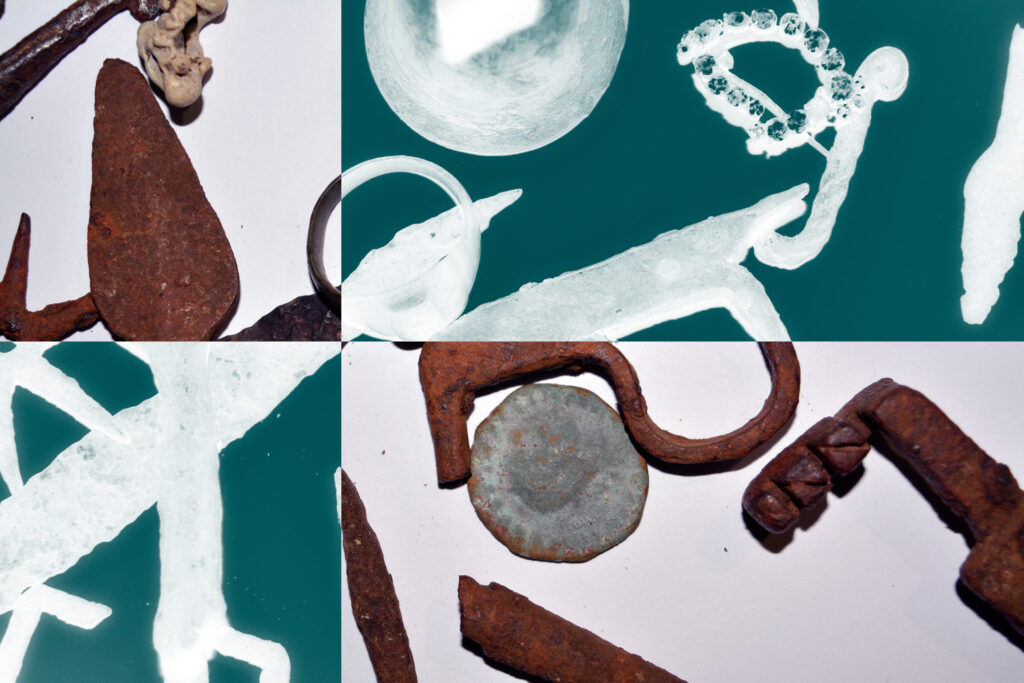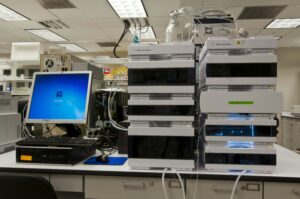
Around 5,000 years ago, inhabitants of what is now Iran embarked on a groundbreaking technological journey, extracting copper from rock through a process known as smelting. This pivotal advancement heralded the dawn of metallurgy, a craft that would soon spread across the globe. People began to use copper and its alloys, such as bronze, to create decorative objects, weapons, and tools. However, understanding the intricacies of these early metallurgical processes has been challenging due to the scarcity of surviving artifacts, which are often carefully preserved.
In a recent study published in PLOS One, researchers from the Massachusetts Institute of Technology (MIT) have unveiled a novel approach to examining some of the earliest metallurgical processes. By studying 5,000-year-old slag waste, a byproduct of smelting, they utilized X-ray computed tomography (CT scanning) to reveal intricate details within these ancient materials. This noninvasive imaging technique, traditionally used in the medical field, has opened new avenues for understanding the technological capabilities of early civilizations.
Revolutionizing Archaeological Methods
“Even though slag might not give us the complete picture, it tells stories of how past civilizations were able to refine raw materials from ore and then to metal,” says Benjamin Sabatini, a postdoctoral researcher at MIT. “It speaks to their technological ability at that time, and it gives us a lot of information. The goal is to understand, from start to finish, how they accomplished making these shiny metal products.”
In collaboration with senior author Antoine Allanore, a professor of metallurgy at MIT, Sabatini combined CT scanning with traditional methods of analyzing ancient artifacts. These methods include cutting samples for further examination. The researchers demonstrated that CT scanning could complement these techniques by revealing pores and droplets of different materials within samples. This information could illuminate the materials used by some of the first metallurgists on Earth and their level of technological sophistication.
“The Early Bronze Age is one of the earliest reported interactions between mankind and metals,” says Allanore, who also directs MIT’s Center for Materials Research in Archaeology and Ethnology. “Artifacts in that region at that period are extremely important in archaeology, yet the materials themselves are not very well-characterized in terms of our understanding of the underlying materials and chemical processes. The CT scan approach is a transformation of traditional archaeological methods of determining how to make cuts and analyze samples.”
Unlocking the Secrets of Slag
Slag, produced as a molten liquid when ores are heated to produce metal, contains various minerals from the ore and unreacted metals. It often includes additives like limestone. In this mixture, slag is less dense than metal, allowing it to rise and be removed, solidifying like lava as it cools.
“Slag waste is chemically complex to interpret because in our modern metallurgical practices it contains everything not desired in the final product – in particular, arsenic, which is a key element in the original minerals for copper,” explains Allanore. “There’s always been a question in archaeometallurgy if we can use arsenic and similar elements in these remains to learn something about the metal production process. The challenge here is that these minerals, especially arsenic, are very prone to dissolution and leaching, and therefore their environmental stability creates additional problems in terms of interpreting what this object was when it was being made 6,000 years ago.”
The study focused on slag from the ancient site of Tepe Hissar in Iran, dating back to between 3100 and 2900 BCE. The slag was loaned by the Penn Museum to Allanore for study in 2022. “This region is often brought up as one of the earliest places where evidence of copper processing and object production might have happened,” Allanore notes. “It is very well-preserved, and it’s an early example of a site with long-distance trade and highly organized society. That’s why it’s so important in metallurgy.”
CT Scanning: A New Tool for Archaeology
The researchers believe this is the first attempt to study ancient slag using CT scanning, partly due to the high cost and limited availability of medical-grade scanners. By collaborating with a local startup in Cambridge and utilizing MIT’s own CT scanner, they overcame these challenges.
“It was really out of curiosity to see if there was a better way to study these objects,” Sabatini remarks. In addition to CT scans, the researchers employed conventional archaeological analytical methods such as X-ray fluorescence, X-ray diffraction, and optical and scanning electron microscopy. The CT scans provided a comprehensive view of the internal structure of the slag, highlighting features like pores and material fragments, thereby augmenting traditional techniques.
Using this information, the researchers could more accurately determine where to section their samples, a process often based on guesswork. “My strategy was to zero in on the high-density metal droplets that looked like they were still intact, since those might be most representative of the original process,” Sabatini explains. “Then I could destructively analyze the samples with a single slice. The CT scanning shows you exactly what is most interesting, as well as the general layout of things you need to study.”
Implications for Future Research
Previous studies of slag samples from Tepe Hissar revealed inconsistencies, with some containing copper and others showing no evidence of it. The CT scanning enabled researchers to characterize intact copper droplets and identify gas voids that provide insights into production processes. The presence of small metallic arsenide compounds in some samples had led to debates about arsenic’s role in early metal production. The MIT researchers discovered that arsenic existed in different phases and could move or escape from the slag, complicating interpretations of metallurgical processes.
Looking ahead, the researchers believe CT scanning could become a powerful tool for unraveling complex ancient materials and processes. “This should be an important lever for more systematic studies of the copper aspect of smelting, and also for continuing to understand the role of arsenic,” Allanore states. “It allows us to be cognizant of the role of corrosion and the long-term stability of the artifacts to continue to learn more. It will be a key support for people who want to investigate these questions.”
This pioneering work was supported in part by the MIT Human Insight Collaborative (MITHIC), and it underscores the potential of CT scanning to transform the field of archaeometallurgy.






